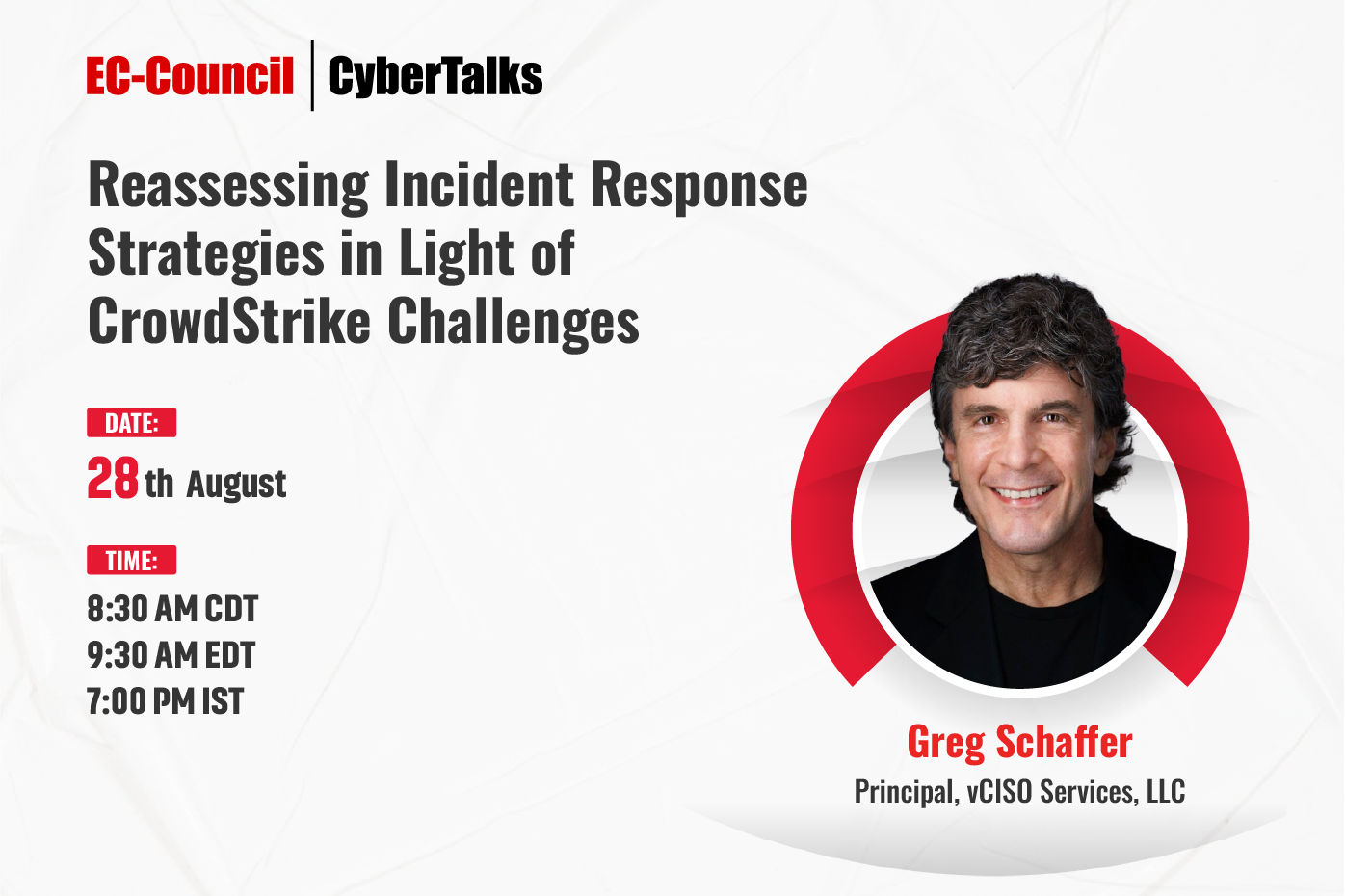Cyber attackers have increased in volume and sophistication in recent years, making the traditional approach to data security inept. With threat actors ramping up their tools and techniques, the volume of zero-day exploits has increased, and the amount of time available at the disposal of security professionals to fix the vulnerability has reduced drastically. Security teams across organizations relying on passive monitoring and detection must shift to proactive security measures to thwart emerging threats.
Proactive security starts with advanced threat intelligence gathering and policy implementation that helps organizations prepare for novel threats and vulnerabilities. Active defense in cybersecurity aims to understand the new and emerging Tactics, Techniques, and Procedures (TTPs) of all threats and actors by gathering intelligence through various means. Proactive security is not just about possessing the latest technologies but also about how organizations utilize these capabilities to impede the progress and impact of sophisticated threats. As actors tend to exploit inadequately defended networks or applications, leveraging proactive defense has become an imperative strategy for modern cybersecurity.
Understanding Security Threats and Active Defense
While infiltrating an organization’s network, attackers often display behavior that, when analyzed, can provide valuable insights into their threat activities. Active defense strategies leverage these TTPs to collect in-depth information about malicious activities.
Active defense employs proactive strategies to outmaneuver hackers and disrupt their cyberattacks, making their nefarious activities more challenging (Fortinet, n.d.). This approach aids organizations in thwarting cyber intruders’ progress within their network, increasing the likelihood of hackers making errors that reveal their presence or methods.
Active defense integrates deception technology, which identifies attackers in the earliest stages of their assault. Techniques such as digital baiting and device decoys obscure the attack surface and deceive intruders. This diversion tactic wastes attackers’ time and computational resources and provides valuable intelligence regarding the ongoing cyber threat.
In some cases, active defense extends to supporting offensive measures and may involve counterattacking against hackers. However, this aggressive approach is generally reserved for law enforcement agencies with the authority and resources to act appropriately.
Threat Intelligence as Part of Active Defense
A honeypot is a cybersecurity mechanism designed to deceive and lure potential attackers. It operates as a simulated, enticing target or system, enticing hackers to interact with it. The primary aim of a honeypot is to gather intelligence on cyber threats and the tactics employed by malicious actors (Manglicmot, 2015). By attracting and monitoring the activities of hackers, organizations can gain insights into emerging attack techniques, vulnerabilities, and potential security weaknesses. Honeypots do not contain real data or provide access to critical systems, making them a valuable tool for enhancing network security, detecting threats, and fortifying defenses against cyberattacks (Petrunić, 2015). Based on the same principles, various methodologies for active defense could be listed as follows:
- Creating fake email addresses: Email is a common target for cyberattacks, especially phishing scams with harmful attachments and fake website links. Companies can use fictitious email addresses to bait attackers, which can provide valuable insights into the attacker’s phishing methods.
- Deploying fake database data: Another commonly used method involves introducing baited data, fictitious records, or content into a segmented network, enticing attackers to pilfer the phony data. This tactic equips organizations with valuable insights into the intrusion methods employed by attackers and the vulnerabilities they exploit within their networks.
- Embedding web beacons: Web beacons are comprised of an internet link connected to a discreetly concealed element within a file, purposefully designed to maintain a low profile. When an attacker gains access to a document housing such a beacon, the entity managing the beacon gathers information about the target computer system and its online activities. Much like the strategy involving counterfeit executable files, the effectiveness of this approach depends on the attackers’ failure to enforce firewall restrictions on outbound traffic or external ports.
- Fake executable files: Dummy ‘.exe’ files appear as applications or software programs, but upon execution by the attacker, they trigger a ‘phone home’ function. This action allows the organization to gather details about the attacker, including their Internet Protocol (IP) address and system information, a process sometimes called a ‘hack back.’ This method could potentially harm the attacker’s system and raise concerns about cybersecurity and privacy regulations.
- Active data baiting: Web application platforms require digital keys and passwords to unlock their access management infrastructure. Organizations have the flexibility to store these credentials in diverse locations, given their significant value to cybercriminals, who may exploit these keys to manipulate an organization’s infrastructure or infiltrate corporate networks. Through the integration of logging mechanisms with credential usage, organizations can employ these as honeytokens for the purpose of scrutinizing, tracking, and documenting the actions of potential attackers.
Since the honeypots are faked proxies used to log network activity, they contain no sensitive information. Further based on their design, there are four types of honeypots: low-interaction honeypots, medium-interaction honeypots, high-interaction honeypots, and pure honeypots. Going a few steps ahead, organizations can use honeynets, which are nothing but a network of honeypots that are installed in a virtual and isolated environment along with various servers to record the activities of the attackers and understand the potential threats (Pawar, 2023).
Role of Security Operations Center (SOC) in Active Defense
A Security Operations Center (SOC) is pivotal in active defense strategies. SOC teams are the first line of defense against cyber threats. They continuously monitor networks, detect anomalies, and respond to potential security breaches. Active defense, as facilitated by a SOC, involves proactive measures to thwart threats (Checkpoint, n.d.). This includes real-time threat intelligence analysis, threat hunting, and immediate incident response. SOC experts can monitor the threat actor’s activity by collaborating with the honey pot strategy. Utilizing the intelligence from the honeypot SOC can help security teams identify vulnerabilities, implement security measures, and fortify network defenses, reducing the attack surface.
SOC can also collaborate with threat-sharing communities by utilizing intelligence from the honeypot and staying updated on emerging threats. A SOC’s active defense capabilities are critical for preventing, mitigating, and rapidly responding to cyber threats. A SOC, at the core of an organization’s infrastructure, plays a critical role in enhancing overall security. It is important to recognize that the SOC handles authentication and access control, which are critical components in risk mitigation and sensitive data protection. Prioritizing regulatory compliance is essential for organizations, even as they work to cut down on operating costs and avoid data breaches (Pawar, 2023).
Challenges in Implementing Active Defense
Implementing active defense strategies in a cybersecurity framework is essential for effectively mitigating threats, but it comes with its own challenges.
- There’s a fine line between active defense and potentially crossing legal boundaries. Deception, for instance, can inadvertently impact legitimate users and expose organizations to legal risks. Striking the right balance between proactive defense and compliance with laws and regulations is a perpetual challenge.
- The resource and expertise gap can be significant. Many organizations need help finding and retaining skilled cybersecurity professionals who effectively manage and execute active defense measures. The evolving nature of cyber threats requires ongoing training and education, adding another layer of complexity.
- Active defense strategies often require reallocating resources and investments. Organizations must decide where to allocate budgets, which security tools to implement, and how to maintain a robust security posture without overburdening their finances.
- Interoperability and integration among various security tools can also be a challenge. Ensuring these tools work seamlessly and provide a holistic view of the threat landscape can be complex.
- The dynamic nature of threats means that active defense strategies must continuously evolve. What worked today may not work tomorrow, necessitating a constant planning, testing, and adjustment cycle.
While active defense is crucial in safeguarding against cyber threats, organizations must navigate a complex landscape of technological and operational challenges to implement and maintain effective strategies. It requires a multidisciplinary approach and a commitment to staying ahead of ever-evolving threats.
Conclusion
Active defense serves as a vital asset in bolstering an organization’s security. The tactics mentioned above empower security teams to collect valuable insights into cybercriminal techniques, their methods for exploiting vulnerabilities, and their preferences for specific information. This intelligence is essential for gaining a deeper understanding of attackers’ motives and safeguarding organizational security measures against the ever-evolving landscape of cyber threats.
References
- Checkpoint. (n.d.). Security Operations Center (SOC) Roles and Responsibilities. https://www.checkpoint.com/cyber-hub/threat-prevention/what-is-soc/security-operations-center-soc-roles-and-responsibilities/
- Fortinet. (n.d.). Active Defense. https://www.fortinet.com/resources/cyberglossary/active-defense
- Manglicmot, M. (2015, May 01). Active Defense: Security Operations Evolved. The Cyber Defense Review. https://cyberdefensereview.army.mil/CDR-Content/Articles/Article-View/Article/1135998/active-defense-security-operations-evolved/
- Pawar, S., & Palivela, H. (2022). LCCI: A framework for least cybersecurity controls to be implemented for small and medium enterprises (SMEs). International Journal of Information Management Data Insights, 2(1), 100080.
https://doi.org/10.1016/j.jjimei.2022.100080 - Pawar, S., & Pawar, P. (2024). BDSLCCI. Notionpress.com. notionpress.com/read/bdslcci.
- Pawar, S., Ashok, S., & Palivela, H. (2023). Importance of Least Cybersecurity Controls for Small and Medium Enterprises (SMEs) for Better Global Digitalised Economy. Contemporary Studies in Economic and Financial Analysis, vol. 110B, no. 978-1-83753-417-3, 2023, pp. 21–53, ideas.repec.org/h/eme/csefzz/s1569-37592023000110b002.html
- Pawar, S. (2023). Role of Authentication, Role Management & Access Control as Integral Part of SOC Capabilities. EC-Council.
https://www.eccouncil.org/cybersecurity-exchange/security-operation-center/role-of-authentication-access-management-in-soc/ - Petrunić, A.R. (2015, May). Honeytokens as active defense. In 2015 38th International Convention on Information and Communication Technology, Electronics and Microelectronics (MIPRO), pp. 1313-1317. IEEE. https://ieeexplore.ieee.org/document/7160478
Tags
About the Author











